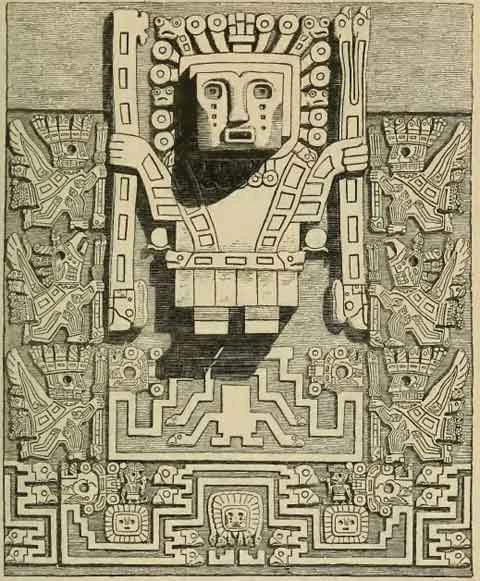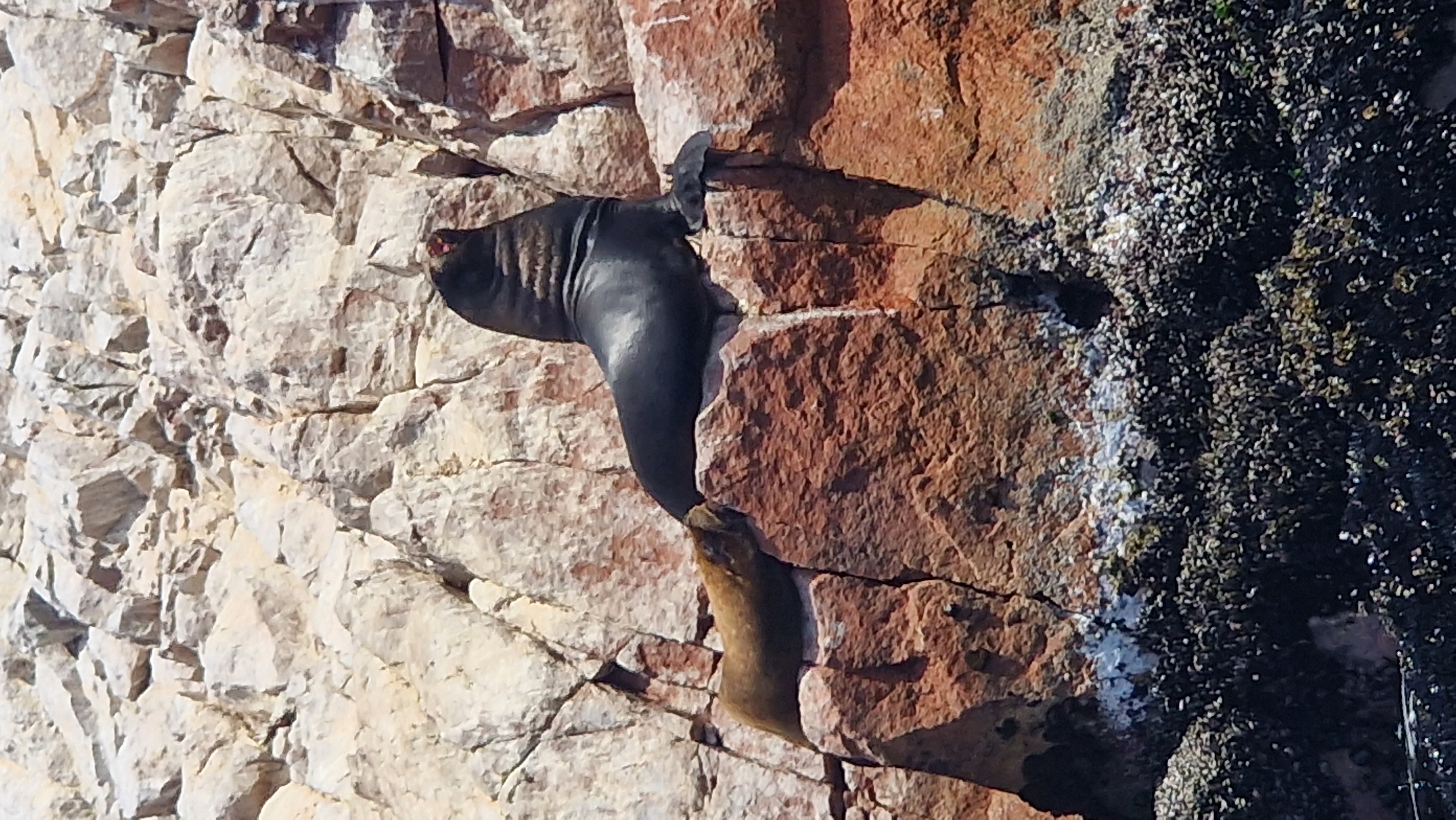The Paracas Candelabra: Peru’s Mysterious Beacon of the Gods (or Maybe Just a Really Big Signpost)
The Paracas Candelabra: Peru’s Silent Storyteller

Posted on Fri 7 Mar 2025 · by Ray Gudrups
Picture this: you’re on a boat, bobbing along the Pacific, the salty air whipping through your hair, and suddenly, there it is—etched into the side of a barren, sandy hillside like some ancient billboard. It’s massive, nearly 600 feet tall, and it looks like a three-pronged candelabra, or maybe a trident, depending on how you squint. You’re staring at the Paracas Candelabra, one of Peru’s most enigmatic geoglyphs, and it’s been sitting there for over two thousand years, silently daring you to figure out what the hell it means.

Welcome to the Paracas Peninsula, a windswept, sun-bleached stretch of desert coastline about three hours south of Lima. This is where the Atacama Desert meets the sea, and it’s as desolate as it is beautiful. The Candelabra, or El Candelabro as the locals call it, is carved into the northern face of the peninsula, overlooking Pisco Bay. It’s not just big—it’s visible from 12 miles out at sea. That’s no accident. Whoever made this thing wanted it to be seen.
But who did make it? And why? Ah, that’s where the fun begins. The Paracas Candelabra is like the Nazca Lines’ lesser-known but equally mysterious cousin. While the Nazca Lines get all the glory (and the alien conspiracy theories), the Candelabra sits quietly, waiting for its moment in the spotlight. And trust me, it deserves it.
The Facts (Or What We Think We Know)
First things first: the Paracas Candelabra is old. Like, really old. Archaeologists have found pottery near the site that dates back to around 200 BCE, which links it to the Paracas culture—a pre-Incan civilization that thrived in the area from about 800 BCE to 100 BCE. These folks were no slouches; they were master weavers, skilled farmers, and had a thing for mummifying their dead with some seriously elaborate textiles. Oh, and they were into cranial deformation—think coneheads, but real. So, yeah, they were interesting.
The Candelabra itself is a geoglyph, meaning it’s a large design etched into the earth. It’s about 595 feet tall and 230 feet wide, and it’s dug two feet deep into the hard, sandy soil. Stones outline its edges, possibly added later to help preserve it. The dry, stable climate of the Paracas Peninsula has kept it remarkably intact for centuries. But despite all that, we still don’t know exactly what it was for.
Myths, Legends, and Wild Guesses
Here’s where it gets good. Over the years, people have come up with all sorts of theories about the Candelabra’s purpose. Some are plausible, some are bonkers, and some are just plain fun to think about. Let’s dive in.
1. A Navigational Aid for Ancient Mariners
This is the most straightforward theory, and honestly, it makes a lot of sense. The Candelabra is visible from miles out at sea, and its location on the peninsula makes it a perfect landmark for sailors. Think of it like an ancient lighthouse, minus the light. Local lore says it helped guide ships to the coast, marking the way to safe harbor or key fishing grounds. Given that the Paracas culture was coastal and likely relied on the sea for trade and food, this theory holds water. (Pun intended.)
2. A Tribute to the Gods (Specifically, Viracocha)
Another popular idea is that the Candelabra is a religious symbol, possibly representing the trident or staff of Viracocha, the Incan creator god. Viracocha was a big deal in Andean mythology—he’s often depicted with a staff in each hand, and some believe the Candelabra’s three prongs symbolize his power. The problem? The Paracas culture predates the Incas by a solid thousand years, so unless Viracocha was really ahead of his time, this theory might be a stretch. Still, it’s possible that the symbol carried over into later cultures, evolving into something more recognizable. 
3. A Giant Hallucinogenic Plant
Buckle up, because this one’s a trip. Some researchers think the Candelabra might represent the Jimson weed (Datura stramonium), a plant with hallucinogenic properties used in rituals by various Native American cultures. The idea is that the geoglyph’s design resembles the plant’s spiky fruit or flower. While there’s no direct evidence that the Paracas people were into Jimson weed, the region is known for its shamanic traditions and psychoactive plants, so it’s not completely out of left field. Imagine that: a giant psychedelic signpost. Groovy.
4. A Masonic Symbol (Yes, Really)
Here’s where we start veering into tinfoil hat territory. Some folks believe the Candelabra is a Masonic symbol, possibly left by colonial-era Freemasons as a secret marker. This theory popped up because the design vaguely resembles the Masonic “Square and Compasses.” The problem? Freemasonry didn’t exist until the 18th century, and the Candelabra is at least 2,000 years old. So, unless the Masons had a time machine, this one’s probably a bust. But hey, it’s a fun story to tell over a few pisco sours.
5. José de San Martín’s Calling Card
Local legend has it that the Candelabra was created by José de San Martín, the South American independence hero, during his campaign in the 1820s. According to this tale, San Martín carved it as a signal to his troops or as a symbol of liberty. It’s a nice story, but there’s one tiny issue: the geoglyph was already there when San Martín arrived. In fact, it’s documented on maps from the 1600s. Nice try, though.
Conspiracy Theories: Aliens, Ancient Civilizations, and Other Fun Stuff
No ancient mystery would be complete without a few conspiracy theories, and the Paracas Candelabra delivers. Let’s take a quick look at the fringe ideas.
1. Ancient Astronauts
Ah, yes, the classic “aliens did it” theory. Some believe the Candelabra was created by extraterrestrials or as a signal to them. Why? Because it’s big, it’s precise, and we don’t fully understand it—therefore, aliens. This theory gets a boost from the nearby Nazca Lines, which have their own UFO lore. But let’s be real: there’s zero evidence to support this. It’s more likely that the Paracas people, like other ancient cultures, were just really good at making big things with simple tools.
2. A Lost Civilization
Another theory suggests that the Candelabra was made by a civilization even older than the Paracas—one that we haven’t discovered yet. This idea is fueled by the fact that the Paracas Peninsula is still being studied, and new archaeological finds are popping up all the time. Could there be an unknown culture lurking in the shadows of history? Maybe. But for now, it’s just speculation.
3. Astronomical Alignment
Some researchers think the Candelabra might be aligned with celestial events, like solstices or equinoxes, similar to the Nazca Lines. While this is possible, there’s not much hard evidence to back it up. Still, it’s an intriguing thought—imagine ancient people using the geoglyph as a giant calendar or star map.
How to Get There (and What to Expect)
Alright, enough with the theories. Let’s talk about how you can actually see this thing for yourself. The Paracas Candelabra is located on the Paracas Peninsula, about 150 miles south of Lima. The nearest town is Paracas, a small coastal resort that’s become a hub for tourists heading to the nearby Ballestas Islands (think of them as Peru’s answer to the Galápagos, but smaller and smellier).
To see the Candelabra, you’ll need to hop on a boat tour from Paracas. These tours are easy to find—just stroll along the waterfront, and you’ll be bombarded with offers. Most tours are about two hours long and include a visit to the Ballestas Islands, where you can see sea lions, Humboldt penguins, and more bird species than you can shake a stick at. The boat will cruise past the Candelabra, giving you plenty of time to snap photos and ponder its mysteries.
Pro Tips:
- Wear a hat. The Ballestas Islands are home to thousands of birds, and they’re not shy about dropping guano bombs. You’ve been warned.

- Bring sunscreen. The sun reflects off the water and the desert, and you’ll fry faster than a chicharrón.
- Book your tour in the morning. The sea is calmer, and the light is better for photos.
If you’re feeling adventurous, you can also hike to a viewpoint on the peninsula for a land-based perspective, but the best views are definitely from the water.
Beyond the Candelabra: Exploring Paracas
While you’re in the area, don’t miss the chance to explore the rest of the Paracas National Reserve. It’s a stark, beautiful landscape where the desert meets the sea, and it’s home to some of Peru’s most unique wildlife and archaeological sites.
- Paracas National Reserve: Take a guided tour or rent a bike to explore the reserve’s beaches, cliffs, and flamingo-filled lagoons. The sunsets here are unreal.
- Paracas Necropolis: This archaeological site is where the Paracas culture buried their dead, wrapped in intricate textiles. The on-site museum has some fascinating (and creepy) mummies with elongated skulls.
- Pisco Tasting: You’re in the heart of pisco country, so don’t leave without trying Peru’s national drink. Whether you prefer it sour or straight, it’s a must.
The Final Word
The Paracas Candelabra is one of those places that sticks with you. It’s not just the size or the mystery—it’s the feeling of standing in the presence of something ancient, something that’s been there long before you and will be there long after. It’s a reminder that history is full of question marks, and sometimes, that’s what makes it beautiful.
So, whether you’re a history nerd, a conspiracy theorist, or just someone who likes a good boat ride, the Candelabra is worth the trip. Pack your hat, grab your camera, and get ready to stare into the past. Just don’t expect all the answers—sometimes, the questions are more fun.
